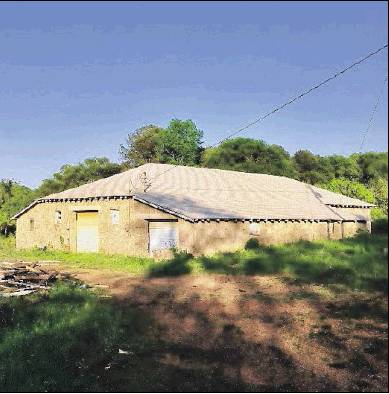DECATUR
Land adds green space in Decatur
City’s $40 million purchase of United Methodist Children’s Home is ‘once in a lifetime moment.’
By Bill Banks For the AJC
In 1873 a group of Methodists paid $6,000 for 226 acres southeast of Decatur to establish a home and farm for children orphaned by the Civil War. Over the years it became the United Methodist Children’s Home, and the property was whittled down to 77 acres. Generations raised in the home consider it sacred ground.
Monday night, Decatur’s city commission unanimously approved paying $40 million to buy the entire spread.
For one of the densest cities in Georgia — 22,000 people within 4.2 square miles — more green space is an item high on the bucket list.
“This is a once in a lifetime moment, and I don’t mean our lifetime — I mean the lifetime of the city of Decatur,” Michael Harbin, a resident since 1980, told commissioners.
City Manager Peggy Merriss, who’s worked for Decatur since 1983, said the last time it bought so much land was probably in the 19th century. She said the UMCH real estate is larger than Decatur’s two biggest parks, Glenwood and the city cemetery, combined. It includes a lake, a 2-acre garden, a century-old granite dairy barn, acres of playing fields and 31 buildings, several of which date to the early 1900s.
City officials haven’t decided exactly how the land will be used, but they made clear Monday there is plenty of need for recreational space. Decatur’s population is at an all-time high, and its school enrollment has nearly doubled since 2009. But only 2.1 percent of its land is used for parks, or 4.12 percent counting the cemetery. Decatur still has the same number of gyms and playing fields it had over a half century ago.
Merriss gave this rough timetable: The city will close on the property sale in early summer. The UMCH, with its staff of 55, will vacate in late summer or early fall. The city will then annex the property (through a petition method and not through the legislature) by October. After that will come six to eight months of community sessions to ultimately create a master plan.
John Cerniglia, UMCH vice president of development, said UMCH trustees accepted the city’s offer without putting the property on the market because “Brokers come with a commission, and we wanted to save every dollar for the home’s mission. Second, we had an independent analysis that valued the property at $34.5 million and the city’s paying ($40 million). Third, the city is willing to preserve some of our history.”
The contract stipulates UMCH will retain ownership of Moore Chapel, built in 1906, one of the four oldest structures on the campus. The city will protect the grave of Jesse Boring, who founded UMCH in Norcross before it moved to its present site in 1873. Boring, who died in 1890, was a medical doctor, Methodist circuit-riding preacher, gold prospector and Confederate army physician and chaplain. He also founded a second Methodist orphanage in Macon.
His grave is in front of the administrative building, which will be renamed to honor Bev Cochran, who was the UMCH’s executive director for 43 years until 2012.
The home will continue its services. Cerniglia said UMCH’s goal is to establish a number of microsites rather than running a central campus with enormous overhead. It serves only 80 people on the Decatur campus, where there were once as many as 160. But it helps 240 altogether, through a family-housing ministry where young adults learn independent living, and foster care for 115 children in more than 40 counties.
